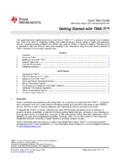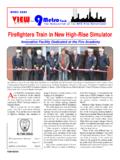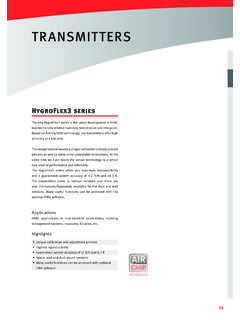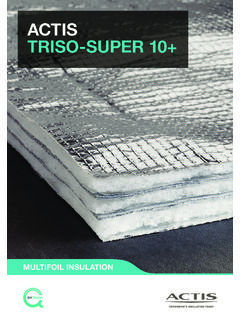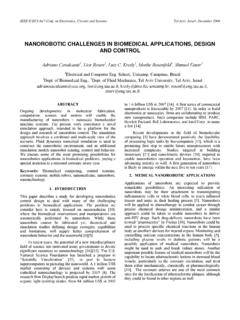Transcription of Southern California Offshore Range (SCORE)
1 Southern California Offshore Range ( score ) Development History (1981-2007) The San Clemente Island Range Complex (SCIRC) is the cornerstone of the tactical training ranges for the Southern California Operations Area (SOCAL). SOCAL supports the largest concentration of naval forces in the world. The SCIRC land, air, and sea ranges provide the Navy, Marine Corps, and other military services, space and facilities which they use to conduct readiness training, and test and evaluation activities. Control over all these activities for operations, scheduling, and maintenance is the responsibility of the Southern California Offshore Range ( score ), who has single operational authority over the San Clemente Island ranges . score presently manages and operates twenty seven (27) training Range sites on the island, and five (5) on the San Diego mainland. These Range sites are in support of the following training missions and communications utilities: Amphibious Warfare (AMW), Air Warfare (AW), Command & Control Warfare (C2W/EW), Ground Truth Data (GTD), Mine Interdiction Warfare (MIW), Navy Special Warfare (NSW), Research, Development & Testing (RDT), Strike Warfare (STW), Surface Warfare (SUW), Under Sea Warfare (USW), and inter-site communications.
2 This diagram shows the SCI Range Complex Operating Areas on and around San Clemente Island: The following is a chronological depiction of the score development: 1FY81 - Planning for a military anti-submarine warfare training Range at San Clemente Island, was initiated jointly with COMASWWINGPAC, AIRPAC, the Naval Ocean Systems Center (NOSC), San Diego., Naval Undersea Center (NUSC), Newport, , Naval Undersea Weapons Station (NUWES), San Diego, and participating. FY82 The Naval Ocean Systems Center (NOSC) designed and constructed the three- shelter Cable Termination Van (CTV) complex, and the Emergency Power Van (EPV). The primary CTV electronics van was then shipped to the Naval Undersea Center (NUSC), in Newport, RI, for the installation of Undersea Cable Termination electronics equipment. The Range Electronic Warfare Simulator (REWS) site and EW systems design were prepared by the Naval Laboratory at China Lake, CA.
3 , and the San Clemente Island site construction was initiated. Kentron International at this time was the San Clemente Island RDT&E ranges support contractor for the Naval Ocean Systems Center. FY83 Upon return receipt of the primary electronics van back to San Diego, NOSC and NUSC Newport, teamed to install the three (3) CTV shelters, and the underwater acoustic array at West Cove on San Clemente Island. The Undersea Warfare Range (USW) was operationally tested and declared operational. Aerial View of CTV Complex (1983) End View of CTV Complex Construction was started on the Range Operations Center (Bldg. 1479) at NAS, North Island. This facility would provide 9,020 sq. ft. of area to support sixty-eight (68) work stations and offices, an Auditorium, three (3)-Conference Rooms, a Data Production Center, a Security & Reception area, sanitary facilities, and the necessary utilities support areas.
4 This facility would provide for the current level of operational support, but planning for future expansion was under consideration. FY84 The initial REWS site construction was completed., consisting of the upper level Control and Maintenance Shelter (CAMS), the Power Distribution System (PDS), and the lower level Noise Jammer Simulator (NJS) compound. The PDS generators were mounted on a large uncovered concrete slab. 2 REWS Site Upon Completion in 1984 FY85 The Anti-Submarine Warfare Range (SOAR) was available for limited operations on 1 August, then became fully operational on 30 August 1985. The Southern California ASW Range (SOAR) now provided an instrumented three dimensional, (air, surface and subsurface) tracking Range for training USW crews and evaluating the performance of USW platforms and equipment. Principal Range users were west coast air, surface and submarine commands.
5 Located west of San Clemente Island, 68 miles off the Southern California coast, SOAR now provide 670 square miles of area instrumented for USW/ASW training. Construction of the SOAR Range Operation Center (ROC), Building 1479 at the Naval Air Station, North Island (NASNI)) was completed. It was commissioned and manned by civil service and sub-contractor personnel. Island operations and technical support was provided by the Kentron International contractor personnel During the first quarter of FY86, a total of 27 exercises were conducted on SOAR, including 18 air, 3 submarine, 3 surface ship and 3 coordinated ASW exercises. During these ASW exercises, submarines participated 20 times, surface ships participated on 24 occasions, helicopters on 65 occasions, and fixed wing aircraft 41 times. FY86 During FY86, a total of 143 ASW training exercises were conducted on SOAR. This total included 83 air, 21 submarine, 20 surface ship, and 19 coordinated ASW exercises.
6 SOAR provided approximately 800 hours of ASW training during this period. FY87 COMNAVAIRPAC consolidated the SOCAL Offshore Training ranges by creating score from multiple incompatible Range development programs. score was commissioned under the command of the Fleet Area Control and Surveillance Facility (FACFAC) at NAS, North Island. During FY87, a total of 207 ASW training exercises were conducted on score , comprised of 128 air, 34 submarine, 37 surface ship, and 8 coordinated exercises. A total of 260 Mk 46 exercise torpedoes (EXTORPS) and 109 Mk 48 extorps were utilized during this period. Several significant firsts were achieved. (1) A Rocket Thrown Torpedo (RTT) launched by the USS Hewitt (DD-966) on July 2, was tracked using a MK 72-3 pinger. 3(2) USS Hewitt was the first ship to be debriefed at the SOAR Range Operations Center (ROC). (3) SOAR was utilized by two S-3B aircraft from VX-1 on 11 September as part of the S-3B OPEVAL, and (4) during COMPTUEX 86-5, 19 MK 46 torpedoes were fired within a two and one half day period.
7 This required the first five-hour MK 27 target runs. FY88 On 1 January, the EW Range became operational using Noise Jammer Simulation (NJS) and a temporary Radar Signal Simulator (RSS-19) using an I-band transmitter at the REWS During the remainder of FY88, these EW services were provided for a total of 76 days, training 143 surface ships and 16 aircraft. During FY88, a total of 309 ASW training exercises were conducted on score , comprised of 166 air, 68 submarine, 59 surface ship, and 16 coordinated exercises. Range support facility construction projects were performed in support of ranges development. These included: the Power Distribution Building (REWS), the Maintenance & Storage Buildings 1 & 2 (REWS), Storage Van & Equipment Pads (REWS), Road Repair (REWS), a Potable Water Tank (REWS), and a Secondary Compound Security Fence (REWS). Also the Sonobuoy Tracking System (STS) South Site road was repaired, and a grey water leach field was installed at the CTV site.
8 These self-help projects were performed by a 409th CBU military construction unit out of Long Beach, Power Distribution System Building (PDS) - 1988 Additional self-help projects utilizing the 7th Marines from Camp Pendleton provided a number of Shore Bombardment Area (SHOBA) facility additions and impact area access upgrades. These included: four (4) Target Area Surveillance System (TASS) Instrumentation Shelters, the Observation Post 1 (OP-1) Personnel Support Building (Palace) entrance patio, a safety bullhorn pad near the Pyramid Cove beach of Fire Support Area 1 (FSA-1), and Range renovation of targets and roads in SHOBA. 4 Target Area Surveillance System (TASS) Shelter-1988 Also during this year, the Corps of Engineers from Walla Walla, WA.
9 , provided surveys of the CTV and REWS sites. And in September, DynCorp was awarded the Range support contract at NOSC. FY89 During FY89, a total of 321 ASW training exercises were conducted on score , comprised of 145 air, 71 submarine, 82 surface ship, and 23 coordinated exercises. Coordinated exercises consisted of parts of READIEX and COMPTUEX, three Naval Reserve training exercises and five CoordOps. During these exercises, submarines participated on 103 occasions, surface shjips on 182 occasions, helicopters on 448 occasions, and fixed wing aircraft on 178 occasions. A total of 276 Exercise Torpedoes (EXTORPS) and 215 extorps were utilized during FY 89. During FY89, EW services were utilized on a total of 123 days. Two hundred thirty nine (239) surface ships and 41 aircraft participated in these training events. The torpedo retrieval site at NALF was augmented with the installation of the exercise torpedo retrieval soft & hard pads in a self-help project utilizing the 14th Combat Engineering Battalion personnel from Fort Ord, CA.
10 This unit also installed concrete foundation footing extensions for the Cable Termination Van (CTV) FY90 During FY90, a total of 367 ASW training exercises were conducted on score , comprised of 202 air, 58 submarine, and 107 surface ship exercises. During these exercises, submarines participated on 86 occasions, surface ships on 141, helicopters on 582, and fixed wing aircraft on 222 occasions. During FY90, EW services were utilized on a total of 123 days, with 223 surface ships, and 41 aircraft participating. The Torpedo Facility (TORPFAC) development was initiated by the installation of the slabs and wing-walls for the Torpedo Storage building, the Weapons Truck Garage, and the slab for the Maintenance & Storage building. An additional torpedo retrieval Soft Pad was installed at this site. A Torpedo Effluent Storage Shelter was also completed. The Tombstone EW site was also initiated with development of miles of road, site fill and compaction, and the installation of equipment van pads, a fuel tank and fuel containment slab/enclosure, and the operations, generator, and motor generator buildings foundations and slabs.
